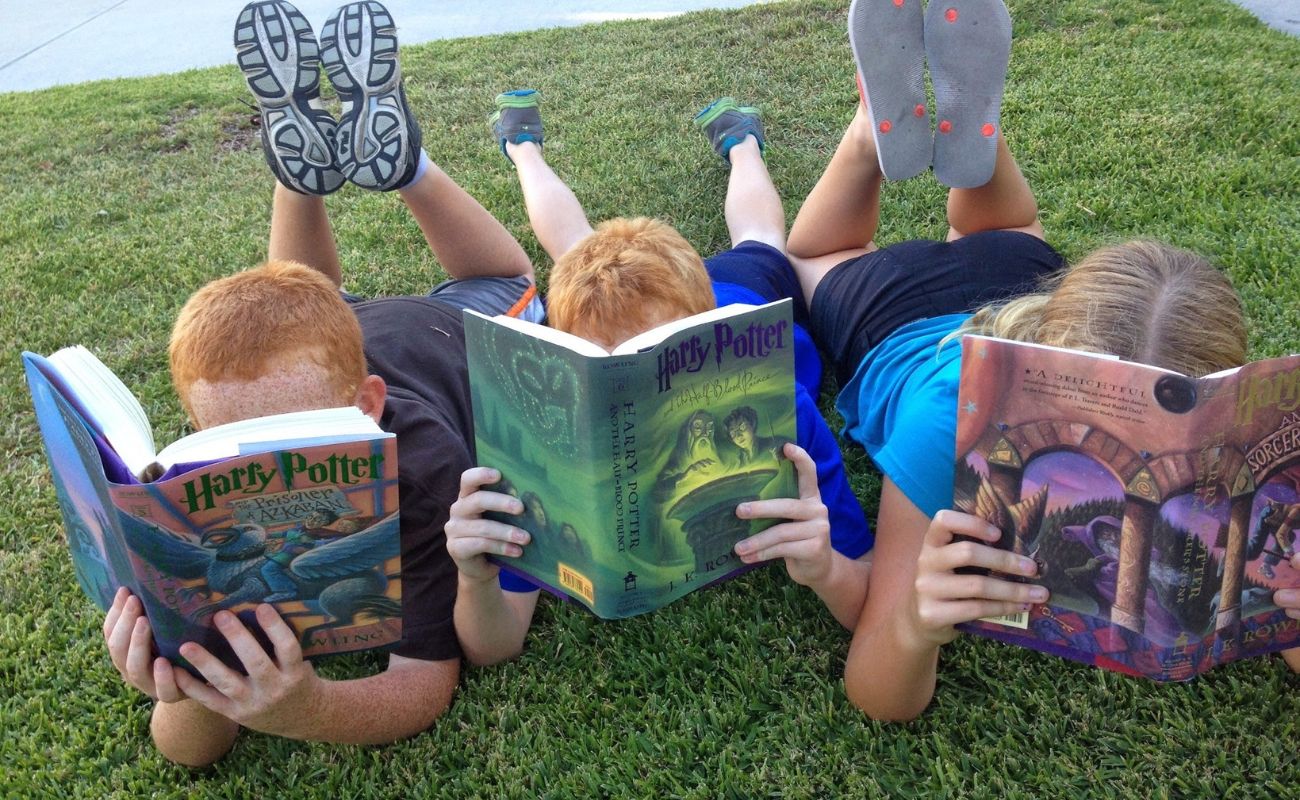Introduction:
Reading is one of the most critical skills a child will acquire, setting the foundation for future learning and academic success. The question is When Do Kids Learn To Read? – Milestone For Parents. Understanding when kids typically learn to read and the milestones they should reach along the way can help parents support their child’s literacy journey. This blog will provide an overview of the typical timeline for learning to read and key milestones for parents to watch.

Identifying and addressing the specific reasons for reading difficulties early on, along with consistent support, can help children develop strong reading skills and become confident readers. If your child goes to school, you can check Preschool Curriculum of your child’s school for your ease and The National Reading Panel is also the best option.
The Reading Development Timeline
Infancy (0-12 Months)
- Exposure to Language: Even before they can speak, infants benefit from being exposed to language. Reading to your baby, talking, and singing help them develop an ear for the sounds of language.
- Visual Stimulation: Board books with bright, high-contrast images help stimulate an infant’s vision and interest in books.
Toddlerhood (1-3 Years)
- Introduction to Books: Toddlers often show interest in books and enjoy being read to. They may start to recognize familiar books and turn pages.
- Vocabulary Growth: During this stage, children experience rapid vocabulary growth, learning new words daily. This is a crucial time for parents to expand their child’s vocabulary through reading and conversation.
- Understanding Stories: Toddlers begin to understand and enjoy simple stories, which helps them learn about narrative structures.
Preschool (3-5 Years)
- Alphabet Knowledge: Many preschoolers begin to recognize and name letters, especially those in their own name.
- Phonemic Awareness: Children start to understand that words are made up of smaller sounds (phonemes). Rhyming games, songs, and playful activities with sounds help develop this awareness.
- Emergent Reading: Some children may start to recognize a few simple words, especially those they see frequently, such as their name or common words like “cat” or “dog.”
Kindergarten (5-6 Years)
- Decoding Skills: Kindergarten is often when children begin to learn to decode words, understanding the relationship between letters and sounds. This is the start of true reading.
- Sight Words: Children learn to recognize common sight words by sight, which helps them read more fluently.
- Reading Simple Texts: Many kindergarteners can read simple texts by the end of the year. They may rely on pictures for context and use their decoding skills to sound out unfamiliar words.
Early Elementary (6-8 Years)
- Reading Fluency: First and second graders work on reading fluently, which means reading smoothly with expression and understanding. They practice decoding more complex words and increase their sight word vocabulary.
- Comprehension Skills: As children become more fluent readers, they also work on comprehension skills, learning to understand and interpret what they read.
- Writing Skills: Reading and writing skills develop together. Children begin to write simple sentences and stories, reinforcing their reading skills.

Key Milestones for Parents to Watch
Birth to Age 3
- Shows interest in books and stories.
- Begins to mimic sounds and babble.
- Recognizes familiar objects and pictures in books.
- Starts to understand simple words and phrases.
Ages 3 to 5
- Recognizes and names letters, especially in their own name.
- Begins to understand that print carries meaning.
- Enjoys being read to and can retell simple stories.
- Starts to recognize some sight words.
Ages 5 to 7
- Begins to decode simple words using phonics.
- Recognizes and reads a growing list of sight words.
- Reads simple texts with increasing fluency.
- Demonstrates basic comprehension skills, such as recalling details and answering questions about a story.
Ages 7 to 8
- Reads more complex texts with greater fluency.
- Uses context to understand unfamiliar words.
- Begins to read independently and for pleasure.
- Shows improved comprehension and can discuss what they’ve read.

Supporting Your Child’s Reading Development
Create a Literacy-Rich Environment
- Read Aloud Daily: Reading aloud to your child daily is one of the best ways to develop their love of reading and improve their literacy skills.
- Access to Books: Ensure your child has access to a variety of books at home. Visit the library regularly and let them choose books that interest them.
- Model Reading: Show your child that reading is enjoyable and important by reading yourself. Share what you’re reading with them.
Engage in Literacy Activities
- Play with Letters and Sounds: Use games, songs, and playful activities to help your child learn letters and sounds.
- Encourage Writing: Provide opportunities for your child to write, whether it’s drawing and labeling pictures, writing letters to family members, or keeping a simple journal.
- Ask Questions: When reading together, ask your child questions about the story to develop their comprehension skills.
Be Patient and Positive
- Celebrate Progress: Celebrate your child’s reading milestones, no matter how small. Positive reinforcement encourages a love of learning.
- Be Patient: Every child learns at their own pace. If your child struggles with reading, provide support and encouragement rather than pressure.
When to Seek Help
While many children learn to read on their own timeline, some may need additional support. If your child shows signs of reading difficulties, such as persistent trouble recognizing letters or sounds, difficulty decoding simple words, or lack of interest in reading, consider seeking advice from a teacher or reading specialist.
What Is The Best Age To Learn To Read?
The question of the best age to learn to read is a common concern for many parents and educators. While there is no one-size-fits-all answer, understanding the developmental stages and individual readiness can help determine the ideal time for a child to start reading. This blog will explore the factors that influence the best age for learning to read, typical age ranges, and how to support your child’s reading journey.

Developmental Readiness for Reading
Reading is a complex skill that requires several cognitive and linguistic abilities to develop simultaneously. These abilities typically include:
- Phonemic Awareness: Understanding that words are made up of individual sounds (phonemes).
- Phonics: Knowing the relationship between letters and sounds.
- Vocabulary: Having a broad range of words and their meanings.
- Comprehension: Understanding and interpreting what is read.
- Fluency: Reading smoothly with accuracy and expression.
Typical Age Ranges for Learning to Read
Ages 0-3: Early Literacy Exposure
While formal reading instruction is not appropriate for this age group, exposure to language and books is crucial. Infants and toddlers benefit from being read to, hearing spoken language, and engaging in playful interactions with books. This early exposure sets the stage for later reading development.
Ages 3-5: Emergent Literacy
During the preschool years, children often show signs of emergent literacy, such as recognizing letters, understanding that print carries meaning, and beginning to recognize some sight words. This stage is about building foundational skills and fostering a love of books and reading.
Ages 5-7: Beginning Reading
Most children begin formal reading instruction in kindergarten or first grade, typically around ages 5 to 7. At this stage, they start learning to decode words using phonics and recognizing common sight words. This is a critical period for developing the basics of reading.
Ages 7-8: Developing Fluency
By second or third grade, children usually work on developing reading fluency, which involves reading more smoothly and with greater comprehension. This stage builds on the foundational skills acquired earlier and aims to make reading more automatic and enjoyable.

Factors Influencing the Best Age to Learn to Read
Individual Readiness
Children develop at their own pace, and readiness for reading can vary widely. Some children show interest and readiness for reading earlier, while others may take a bit longer. Key indicators of readiness include:
- Interest in books and stories.
- Recognizing letters and sounds.
- Understanding that print carries meaning.
- The ability to sit and listen to a story for a few minutes.
Environmental Factors
A child’s environment plays a significant role in their reading development. Factors such as being read to regularly, having access to books, and seeing family members engage in reading can all positively influence when a child is ready to learn to read.
Educational Approaches
The approach taken by schools and educators can also impact the best age for learning to read. Some educational philosophies, such as Montessori, emphasize following the child’s lead and may introduce reading earlier if the child shows interest. Others may have a more structured timeline.

What Are The Pre-Reading Skills For Children To Learn More Actively?
Before children can read independently, they need to develop a set of pre-reading skills that lay the foundation for successful reading. These skills help children understand the basics of language, print, and storytelling, which are crucial for reading readiness. This blog will explore the essential pre-reading skills and how parents and educators can help children develop these skills more actively.
Essential Pre-Reading Skills
1. Phonemic Awareness
Definition: Phonemic awareness is the ability to hear, identify, and manipulate individual sounds (phonemes) in spoken words.
Activities to Develop Phonemic Awareness:
- Rhyming Games: Engage children in rhyming activities. For example, ask them to find words that rhyme with “cat” (e.g., hat, bat, mat).
- Sound Matching: Play games where children match words with the same beginning or ending sounds.
- Clapping Syllables: Clap the syllables in words to help children break down and understand the structure of words.
2. Alphabet Knowledge
Definition: Alphabet knowledge involves recognizing and naming the letters of the alphabet and understanding that each letter has a corresponding sound.
Activities to Develop Alphabet Knowledge:
- Alphabet Songs: Sing the alphabet song and other songs that highlight letter names and sounds.
- Letter Hunts: Go on letter hunts around the house or in books, asking children to find specific letters.
- Alphabet Crafts: Create fun crafts that involve letters, such as making an alphabet book where each page features a different letter and related pictures.
3. Print Awareness
Definition: Print awareness is understanding that print carries meaning and that text is read from left to right and top to bottom.
Activities to Develop Print Awareness:
- Pointing to Words: When reading aloud, point to the words as you read them to show the direction and flow of text.
- Labeling Objects: Label objects around the house with their names (e.g., “door,” “chair”) to show that print represents words.
- Playing with Books: Allow children to explore books by flipping pages, pointing to pictures, and pretending to read.
4. Vocabulary
Definition: Vocabulary refers to the range of words a child understands and uses.
Activities to Develop Vocabulary:
- Read Aloud: Read a variety of books to your child, exposing them to new words and concepts.
- Talk About Experiences: Describe everyday activities and objects, asking open-ended questions to encourage conversation.
- Picture Books: Use picture books to introduce new words and discuss the illustrations and story.
5. Narrative Skills
Definition: Narrative skills involve understanding and telling stories, including the ability to describe events and understand the sequence of a story.
Activities to Develop Narrative Skills:
- Storytelling: Encourage your child to tell you stories or describe events from their day.
- Sequence Games: Play games that involve putting pictures or events in order to build an understanding of sequence.
- Discussing Books: After reading a book, ask your child to retell the story in their own words, discussing the beginning, middle, and end.
6. Listening Comprehension
Definition: Listening comprehension is the ability to understand spoken language and follow verbal instructions.
Activities to Develop Listening Comprehension:
- Read Aloud with Interaction: Ask questions about the story and encourage your child to predict what will happen next.
- Follow Directions: Play games that involve following multi-step directions, such as “Simon Says.”
- Listening Games: Engage in activities that require careful listening, such as identifying sounds in the environment or playing “I Spy” with sounds.

Strategies to Support Pre-Reading Skills
Create a Literacy-Rich Environment
- Books Everywhere: Ensure that books are readily available in your home. Create a cozy reading nook to make reading inviting.
- Variety of Materials: Provide a range of reading materials, including picture books, alphabet books, nursery rhymes, and storybooks.
- Model Reading: Show your child that reading is enjoyable by reading yourself and sharing what you read with them.
Engage in Daily Reading
- Daily Read-Alouds: Make reading aloud a daily habit. Choose books that interest your child and engage them in the story.
- Interactive Reading: Encourage your child to participate in the reading process by asking questions, making predictions, and discussing the story.
Encourage Play-Based Learning
- Alphabet Toys: Use toys like magnetic letters, alphabet blocks, and puzzles to play with letters and sounds.
- Storytime Play: Incorporate storytelling into playtime by using puppets, dolls, or stuffed animals to act out stories.
Foster a Love of Language
- Songs and Rhymes: Sing songs and nursery rhymes that emphasize rhyme, rhythm, and repetition.
- Word Games: Play word games that focus on phonemic awareness, such as “I Spy” with sounds or rhyming challenges.

Why Kids Might Have Trouble Learning To Read?
Kids might struggle with reading due to various factors, including:
- Phonological Processing Issues
- Signs: Difficulty rhyming, identifying sounds, blending sounds.
- Help: Rhyming games, sound matching, multisensory phonics instruction.
- Limited Vocabulary
- Signs: Struggles to understand stories, learning new words.
- Help: Read diverse books aloud, engage in vocabulary-rich conversations.
- Poor Comprehension Skills
- Signs: Difficulty recalling details, making predictions, answering questions.
- Help: Ask open-ended questions, teach summarizing and predicting, use graphic organizers.
- Lack of Reading Fluency
- Signs: Slow, choppy reading, frequent pauses, monotone reading.
- Help: Practice repeated reading, paired reading, reading aloud with feedback.
- Learning Disabilities (e.g., Dyslexia)
- Signs: Persistent reading difficulties, letter reversals, poor spelling.
- Help: Specialist evaluation, evidence-based interventions, accommodations like audiobooks.
- Lack of Exposure to Books and Language
- Signs: Limited interest in books, smaller vocabulary, less familiarity with print.
- Help: Create a literacy-rich environment, daily read-alouds, encourage conversations.
- Attention and Behavioral Issues (e.g., ADHD)
- Signs: Difficulty focusing, frequent distractions, impulsivity.
- Help: Structured routines, break tasks into smaller chunks, positive reinforcement.

Summary:
Understanding the typical timeline for learning to read and the key milestones along the way can help parents support their child’s literacy development. By creating a literacy-rich environment, engaging in fun literacy activities, and providing positive reinforcement, parents can help their child become a confident and enthusiastic reader. Remember, every child is unique, and patience and support are crucial as they learn to navigate the exciting world of reading.


I,Abdullah specializes in helping parents choose meaningful names and navigate the complexities of modern parenting. With a deep understanding of child development and a passion for etymology, I provides expert guidance to make the naming process both personal and impactful. Beyond names, Abdullah offers practical advice and support to help families thrive at every stage of parenting. Through engaging articles and personalized consultations, I empowered parents with the tools and insights needed to create nurturing environments for their children.




